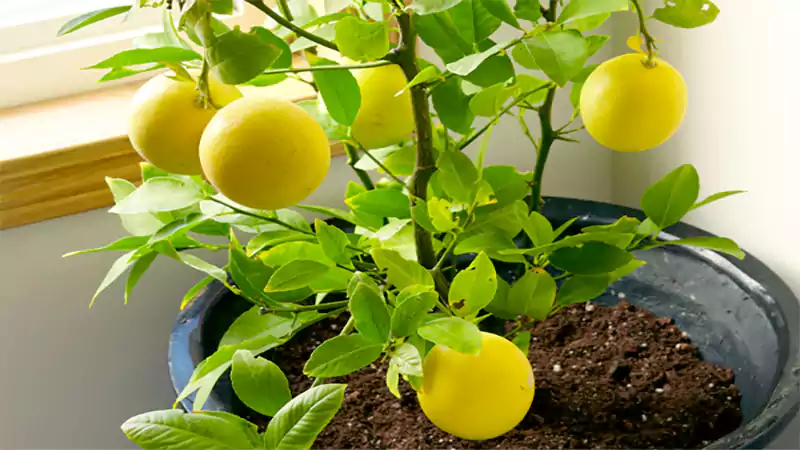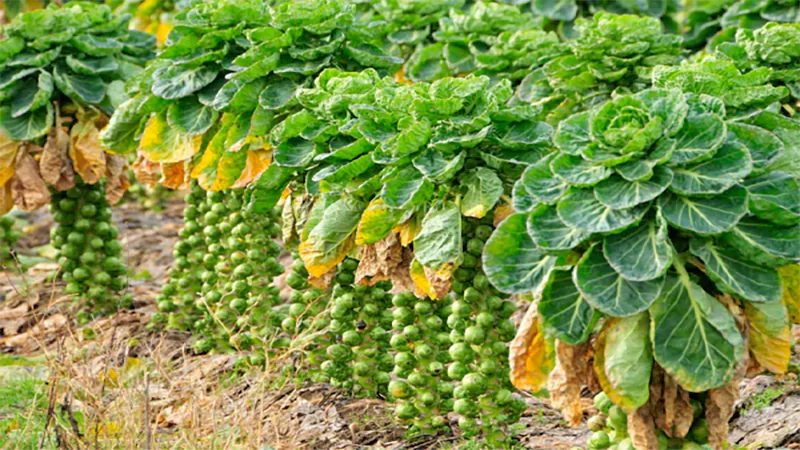There is a gloomy corner in everyone’s balcony or garden, which is often seen as a bare patch or an unplantable zone. But no more. Say hello to shade plants – lush, captivating, and colorful green botanical marvels that are far better in sun-deprived spots than in the sun.
From being strategically placed under trees or shady corners to creating a layer and texture, these charming greens add a colorful and all-year-long interest to your outdoor living areas and balcony gardens.
In this article, let’s go on a journey to explore plants and flowers that grow in a low-light zone, and their essential know-how to make the dull corners of your garden outshine.
Shade Plants 101: Introduction and Attributes
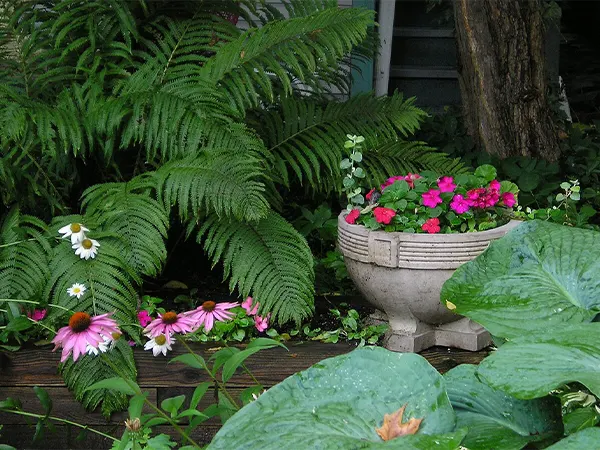
In the world of flora and fauna, where sunlight is life, you must be wondering about shadow garden plants. Originating from forest floors or the understory and wildlife habitats, these cultivars are uniquely adapted to grow and thrive in conditions without direct sunlight.
These plants can process far-red light wavelengths of the light spectrum for photosynthesis. Shade-loving flowers and trees achieve this through having more chlorophyll and developing thinner and larger leaves to capture light. They use red light more efficiently than sun-loving fauna.
Found in a wide variety, from shade perennials, annuals, shade shrubs, climber plants, shade flowers, ground covers, and flower bulbs. Symbolic of resilience, endurance, tranquility, and adaptability, these are true examples of nature’s beauty that don’t always need a spotlight to shine.
Key Features & Benefits of Shade Plants
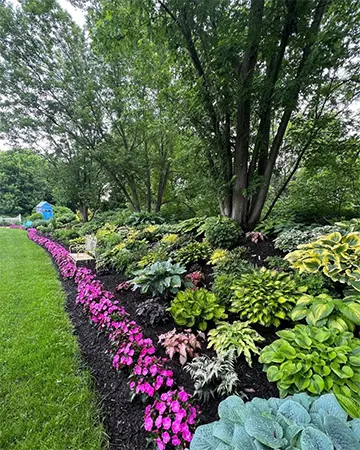
Low-light gardens usually feature a cool and calm environment, which can be enhanced by choosing the right greenery. Their rich green foliage and vibrant flowers highlight the gloomy areas with their beautiful contrast.
Key Features
Like most of the sun-loving dwellers, they also have unique characteristics to make the most out of the available light in their part of the garden and shine. Let us understand the notable features of these low-light plants.
- Thin and Long Leaves: These feature thinner and broader leaves, leading to large surface areas, allowing them to absorb as much as possible.
- Showy Textured Foliage: Many varieties of low-light plants have showy foliage with pigments on it, making them visually appealing.
- Enhanced Nutrient Absorption Quality: In comparison to sun-loving cultivars, these are more capable of extracting nutrients from the soil, which is very beneficial in a nutrient-rich environment like beneath the canopies.
- Efficient Use of Energy: Cool-climate companions tend to grow and thrive using their limited energy very efficiently.
- Less-Dense Cuticle: The top of the leaf (also called as cuticle) is less dense in these species, to make chloroplasts more reachable, which ultimately helps them in photosynthesis.
Most of these genera rely on lush foliage instead of flowers for appeal, ranging from deep emerald greens to variegated silver and burgundy tones. Whether adding to your exuberant collection of indoor plants or gracing your outdoor gardens, these botanical marvels can transform your home garden into a picturesque green land.
Benefits
These terrific botanical marvels are so much more than survivors. Besides their subtle and quiet nature, they are great at balancing beauty with biodiversity. Not only that, these are also categorized as low-maintenance and handy for both novice as well as expert gardeners.
Praised as givers, without asking much in return, these cool corner companions have so much goodness in store for your garden and homes.
- Thrive Without Direct Sunlight: Widely celebrated for thriving under extremely low light conditions, they can embrace your garden setting by making the most out of the filtered rays through canopies and structures.
- Low-maintenance and Hardy: They are generally easy to care for and do not require much watering or sunlight. So the gardener is usually stress-free from the risk of leaves and flowers getting damaged.
- Regulates Temperature: Any overcast area is relatively cooler than sun-exposed areas. Likewise, these flora and fauna reduce the temperature in their surrounding areas, creating a microclimate for other green companions, especially during heat spells.
- Biodiversity and Sustainability: It also attracts pollinators to your garden naturally and creates a shelter and food source for small insects and wildlife. Moreover, in their native habitat, they also shed leaves, contributing to natural mulching and increasing soil fertility.
- Year-Long Appeal: Many of these species yield flowers, but they tend to maintain all-season visual interest through their pigmented, showy foliage, keeping the garden lively and delightful.
Ideal for urban and tight space gardens, they are perfect for landscaping settings like hedges, borders, balconies, patios, and groundcovers. Whether you trail them down from a ceiling like indoor vine plants or place them on shelves or tabletops, these can elevate your home decor and fix the indoor air quality as well.
It’s shocking how much beauty and value they bring to the garden. Isn’t it?
How to Identify Shade Conditions in Your Garden?
Not all shade is the same. It’s essential to assess the level of light in your garden, which can help you analyze what kind of light conditions you have and choose your plants accordingly.
Let us walk through the steps involved in identifying low-light in your garden.
- Notice the Pattern of Sunlight: You have to track down the sunlight throughout the day, whether the area is sunny only in the morning or fully shady. Make a note of the pattern you observe.
- Use a Light Meter or App to Measure Foot Candles: In the next step, measure the light intensity and foot-candles of light.
- Track for Canopies and Structures: Often, light filters through the trees, canopies, and urban structures. You should determine if the filtered light is constant or partial.
- Seasonal Variation: A space that is fully sun-deprived in summer might be sun-filled during winter, as sunlight shifts with the season.
Did You Know?
Foot-candles are a unit of measuring light intensity. 1 foot-candle is the amount of light that falls on a surface one foot away from a standard candle.
Types of Garden Shade
Understanding the steps above will help you in gaining insights about the place, and you can successfully categorise the observations into various types of garden shades and choose verdure according to each type for lush growth.
Based on the availability of sunlight, there are four types of subtle light gardens. Read further to learn what they are.
- Full Shade: It is the deepest place where there is no direct sunlight at all. Choose the genus that can survive in gloomy corners whilst receiving less than 2 hours of sunlight per day.
- Partial Shade: This light condition permits 3–6 hours of morning sunlight, often received through bridges and gaps in trees and structures.
- Dappled Shade: In this zone, a stream of light filters through canopies or trees, creating a pattern of light and shadow on the ground. It receives a changing pattern of light and shadow throughout the day.
- Light Shade: As per the Royal Horticultural Society (RHS), it is a site that is under the bright sky but receives light that is filtered through buildings, high walls, and a group of trees. This type of light condition receives more than 6 hours of bright but not direct sunlight.
Each type of understory fosters a unique environment. If you want your garden’s low-light allies to flourish, choose species that are suited to these light conditions.
Explore the Varieties of Plants that Grow in Shade
Many times, you just end up relishing the sun-filled areas of your garden and neglect the shady corners. You can transform your boring gardens into a more balanced and bloom-filled sanctuary, and make it one-of-a-kind in your neighbourhood.
Have a look at a wide variety of plants that will elevate the darker rooms of your garden and brighten them with their undefined charm.
- Astilbe (Astilbe spp.)
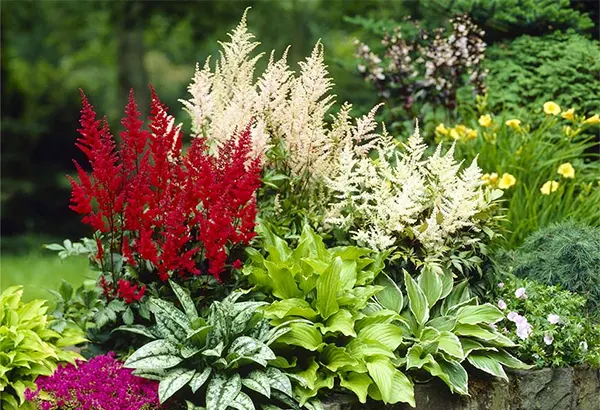
Astilbe is a genus of hardy herbaceous perennials known for their fern-like foliage and plume-like flower spikes in many colors of white, pink, red, and purple. They thrive in shady locations and bloom from late spring through summer.
Plant Type: Herbaceous Perennials
Hardiness Zone: 3-8 USDA
Mature size: 1-4 feet tall and wide
Exposure: Tolerates full sun to shade
- Hellebore (Helleborus spp.)
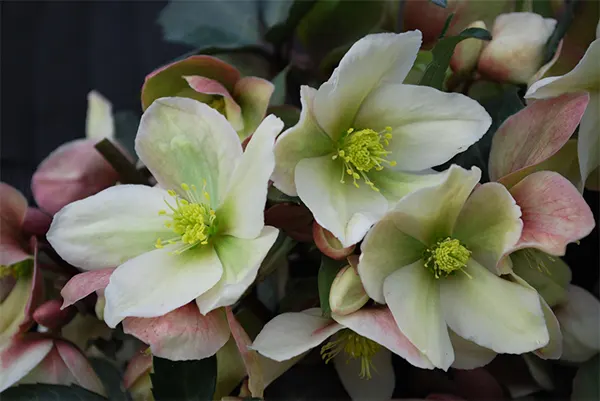
Hellebores are subtle-light, evergreen perennials that feature beautiful cup-shaped flowers in many colors, like green, white, or pink, and dark green palm-like foliage, which brightens your garden all winter to early spring.
Plant Type: Evergreen Perennials
Hardiness: 3-9 USDA
Mature Size: 1-4 feet tall and 1-3 feet wide
Exposure: Thrives in partial and full shade.
- Hosta (Hosta spp.)
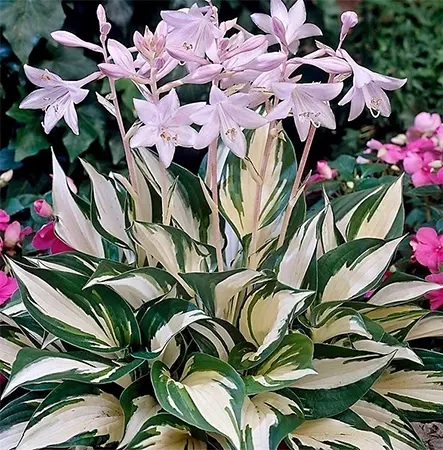
Hosta is a genus of herbaceous perennials for shade that are celebrated for their broad, variegated, captivating foliage and trumpet-shaped flowers. They can survive elegantly under low light and tend to return year after year.
Plant Type: Herbaceous Perennials
Hardiness: 3-9 USDA
Mature Size: 2-48 inches tall and 5-60 inches wide
Exposure: Full shade to partial sun
- Coral Bells (Hechera spp.)
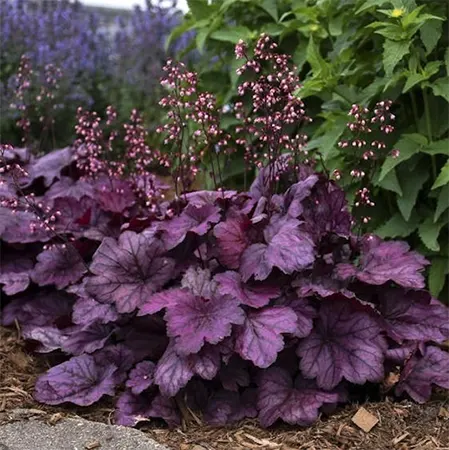
Also known as Heuchera, it is a popular low-maintenance plant that yields variegated leaves in a wide variety of colors, like deep purple, bronze, apricot, lime, or pink. Along with appealing leaves, it bears small bell-shaped flowers that attract attention all summer.
Plant Type: Perennials
Hardiness: 4-9 USDA
Mature Size: 3 and a half feet tall to 1-3 feet wide
Exposure: Partial to dappled shade
- Begonia (Begonia spp.)
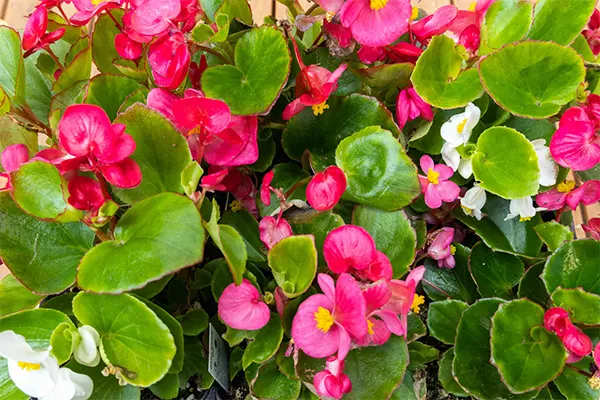
Begonia plants are widely popular and known for their single or double flowers, which bloom from early summer to winter. Occurs in a wide range of colors it is used for various landscaping uses, be it cascading down from a basket, container beds, or backyards.
Plant Type: Annual
Hardiness: 10-11 USDA
Mature Size: 6-36 inches tall and 6-12 inches wide
Exposure: Partial shade to sun
- Coleus (Plectranthus Scutellarioides)
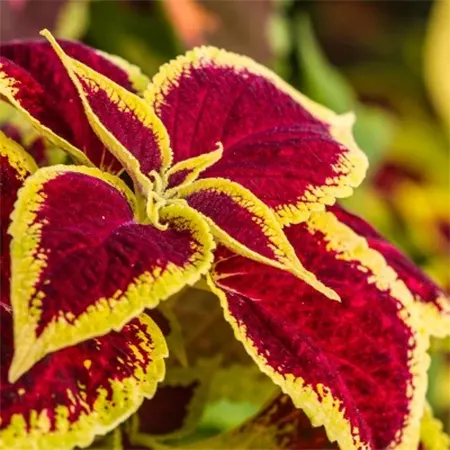
Coleus is praised for its colorful and pattern-rich foliage, along with small white or bluish flowers. This member of the mint family is ideal for understory plantings, borders, and containers. More of a leafy beauty, flowers are usually pruned to encourage new leaf growth.
Plant Type: Annual
Hardiness: 10-11 USDA
Mature Size: 6 inches to 3-½ feet tall and 1-3 feet wide
Exposure: Partial to full shade
- Impatiens (Impatiens spp.)
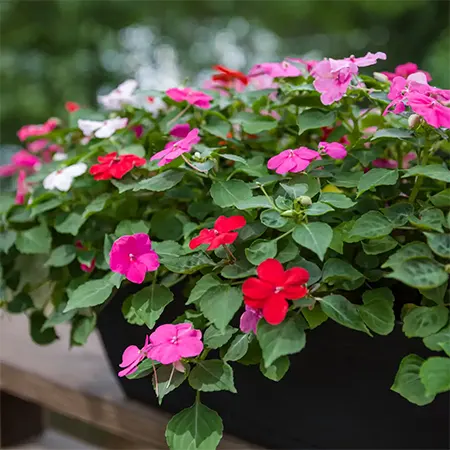
Impatiens is a low-maintenance plant that yields vibrant, showy flowers in many colors and displays all year-round visual interest. These bedding plants are busy and are a perfect choice for filling the dark corners of your garden.
Plant Type: Annual
Hardiness: 10-12 USDA
Mature Size: 6-36 inches tall and 1-3 feet wide
Exposure: Full shade to partial sun
- Wish Bone Flower (Torenia spp.)
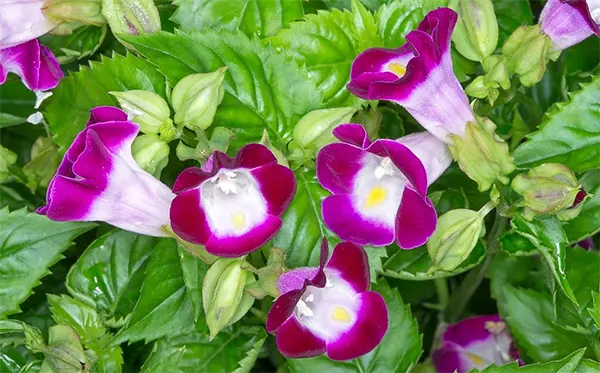
Wishbone is a popular plant among gardeners, known for its trumpet-shaped, distinctly patterned flowers followed by small, ovate, light green leaves. These flowers bloom for a long time from late spring to fall.
Plant Type: Annual
Hardiness: 10-11 USDA
Mature Size: 8-16 inches tall and 8-12 inches wide
Exposure: Thrive in partial and fully low-light areas
- Dogwood (Cornus spp.)
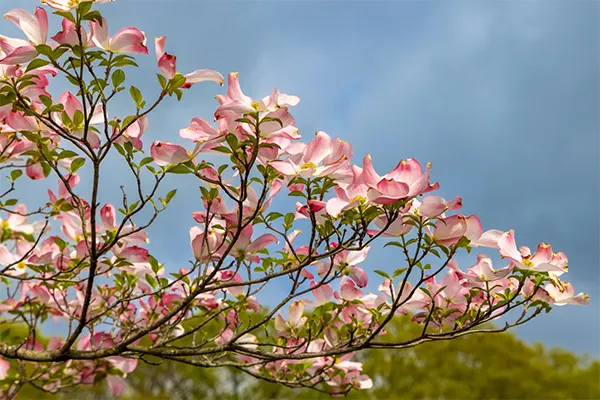
Dogwood is a genus of flowering trees or shade loving shrubs, which is known for its appealing flowers, colorful twigs, and variegated foliage that turn their color to red or purple during the fall. Varieties like white, red, or pink dogwoods are used for many landscaping uses, like urban garden settings, flower beds, or mixed gardens.
Plant Type: Flowering trees or shrubs
Hardiness: 3-9 USDA
Mature Size: 10-40 feet tall and wide
Exposure: Partial to full shade
- Abelia (Abelia spp.)
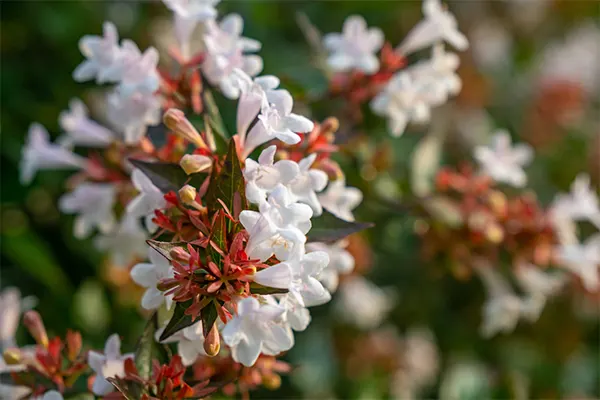
Abelia is considered a flowering shrub, known for its appealing glossy green leaves and showy, long-lasting flowers that maintain a year-round display from late spring, summer and throughout fall. Popularly used for foundation plantings and borders, these are pollination-friendly species with an attractive odour.
Plant Type: Flowering shrubs
Hardiness: 4-11 USDA
Mature Size: 2-10 feet tall and 2-8 feet wide
Exposure: Prospers under partial shade.
- Hydrangea (Hydrangea spp.)
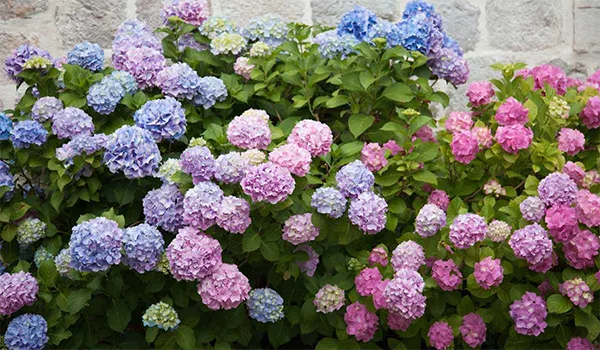
Hydrangea is a deciduous shrub that is characterized by large, dark green leaves and showy, flattened flower heads in a wide range of colors. There are many cultivars of it, like Panicle Hydrangea, Limelight Hydrangea, Vanilla Strawberry Hydrangea, and more, each having distinct flower size, color, and features.
Plant Type: Deciduous shrubs
Hardiness: 3-9 USDA
Mature Size: 3-15 feet tall and 3-12 feet wide
Exposure: Prefers partial and dappled light.
- Mahonia (Berberis spp.)
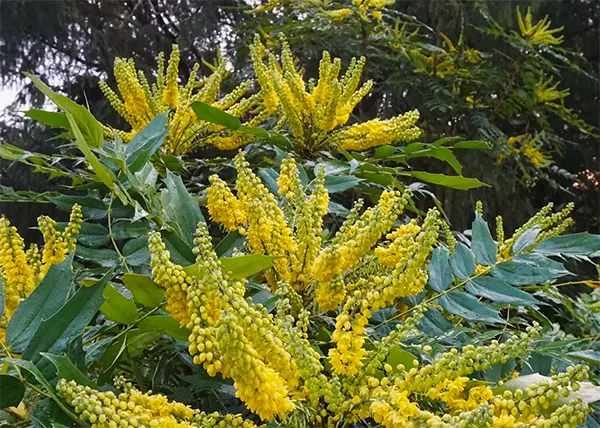
Popularly known as Oregon Grape, it features deep green, glossy holly-like leaves with fragrant yellow flowers, which typically bloom in winter or early spring. It also bears blue-black grape-like berries, which are often edible. The unique appeal of the plant makes it a perfect fit for understory, under trees, mass, and foundation planting.
Plant Type: Evergreen shrubs
Hardiness: 5-10 USDA
Mature Size: 1-20 feet tall and wide, depending on the cultivar
Exposure: Prospers in full and dappled shade.
- Caladium (Caladium spp.)
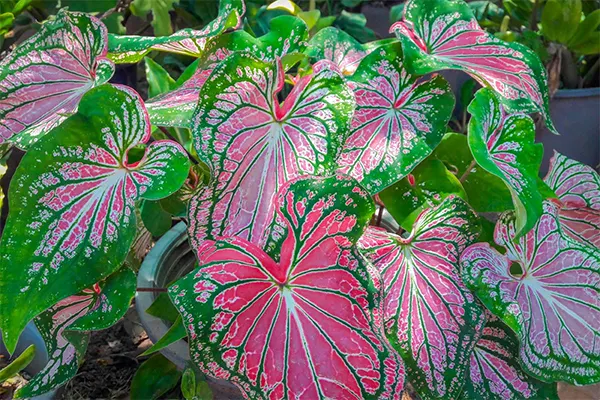
Nicknamed Angel Wings or Elephant Ears, Caladiums are one of the most beautiful tropical plants with large, showy leaves with unique colors and textures. These species grow from tubers, typically from spring to autumn. They are a great option for indoor plantings and filling gloomy spots in your outdoor gardens.
Plant Type: Annuals, usually grown as summer bulbs
Hardiness: 9-11 USDA
Mature Size: 12-24 inches tall and 8-24 inches wide
Exposure: Thrives under full and dappled shade.
- Giant Himalayan Lily (Cardiocrinum Giganteum)
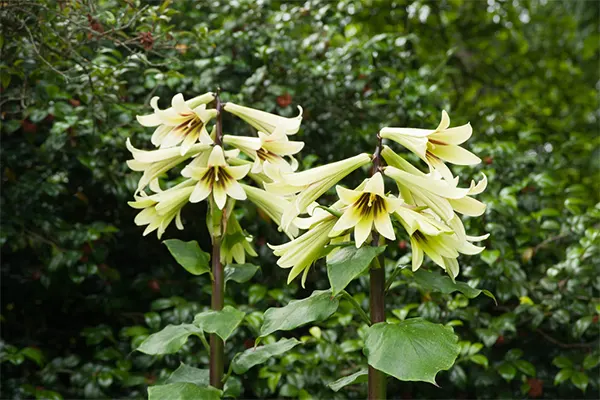
Unlike Asiatic Lily, these Great Himalayan Lilies are deciduous perennials, slow-growing plants, which feature large heart-shaped leaves and trumpet-shaped fragrant flowers, which are usually white with a touch of burgundy at the core.
Plant Type: Deciduous perennial bulbs
Hardiness: 7-9 USDA
Mature Size: 7-9 feet tall and 2-3 feet wide
Exposure: Grows best under partial shade
- Periwinkle (Vinca minor)
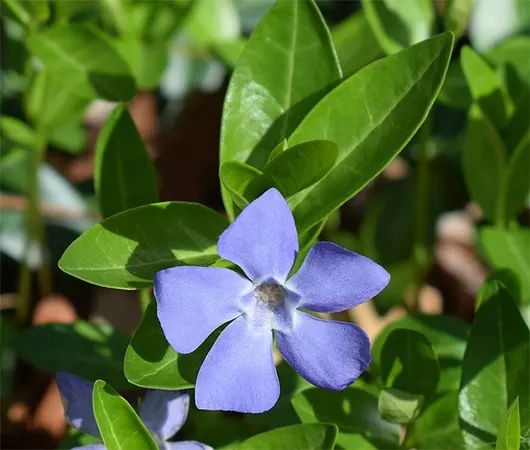
Periwinkle is an evergreen perennial groundcover with dark green glossy leaves and star-shaped five-petalled flowers, occurring in many different hues like purple, blue, or white. It is relatively low-maintenance and a perfect choice for beginner gardeners.
Plant Type: Evergreen perennial groundcover
Hardiness: 4-8 USDA
Mature Size: 3-8 inches tall and 1-2 feet wide
Exposure: Thrives in full and dappled shade
Besides these ineffable garden beauties, there are many other species that can uplift the dark spots in your homes and gardens into a lush green oasis.
Plants like String of Turtles, Syngonium, Areca Palm, Money Plant, Snake Plants, Calathea, Golden Fern, and many more are foliage-centric, which enhance the picturesque of the indoor environment and add a modern flair to our interiors, without much demand.
It must be a tough spot to choose your favorite among them all! With endless varieties and choices, these low-light dwellers are also easy to maintain. Let’s read further to understand the caring guidelines for these plants.
Essential Care Tips for Thriving Shade-Loving Plants
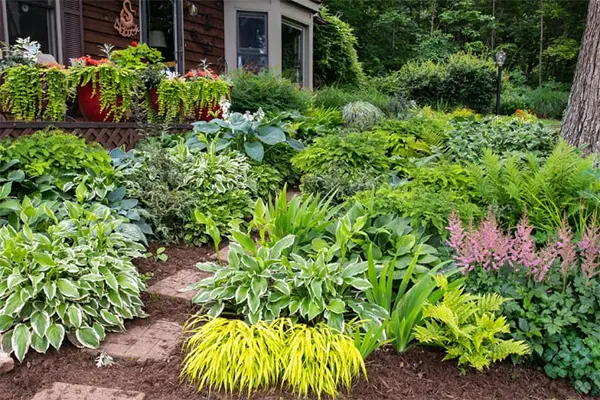
An area with a cool, protected spot is unique in itself as it receives no light or filtered light, retains moisture, has higher humidity, and maintains a cooler daytime temperature. Plants suited to these unique settings are blessed by mother nature and do not have a superfluity of water and sun.
These are simply understated beauties that create a magical sanctuary full of calmness and serenity.
Here’s the ultimate guide on how to care for your shrouded green havens for healthy growth.
| Tips for Caring and Growing Shade Plants | |
| Soil Conditions | These plants thrive in well-drained, fertile soil. If the soil seems poor, amend the soil with organic matter or compost so that it retains moisture for a longer time. |
| Watering | These plants flourish in consistently moist conditions. Ensure to water deeply if the soil seems dry from the top one to two inches. |
| Sunlight | Choose the plants according to the amount of sunlight in the particular zone or area. Not all species can suit all types of light conditions, as some of them survive in absolutely low-light areas and others in partial light. During heat spells, ensure to protect the plants under dappled light. |
| Fertilizer | Use of balanced organic fertilizers during early spring and mid-summer is best suited for lush growth. |
| Pruning | Removing deadheads and leaves can foster new developments in the plant. Besides, deadheads, occasionally trimming the excess growth can lead to better air circulation. |
| Mulching | Adding approximately a 2-inch layer of mulch helps the plants to retain moisture, control soil temperatures, and suppress weeds. |
Like the counter green companions, these plants are also susceptible to various pests and diseases like slugs, snails, aphids, root rots, mites, mealybugs, and powdery mildews. Shady zones are more inviting to slugs and snails, who destroy the foliage and flowers.
But do not worry, you can get rid of fungus and gnats using organic insecticides and pesticides, ensuring a proper spacing between the plants, avoiding overwatering, and maintaining good air circulation and drainage in the soil.
Final Thoughts: Turn Your Shady Corners into a Lush Retreat
Shade plants add beauty and flair to those areas of homes and gardens that otherwise would remain bare and uninviting. Their graceful survival in low-light areas is a true testament to nature’s adaptability and diversity.
Thriving in areas where other plants struggle highlights their symbolism with endurance, tranquility, and resilience. These are nature’s language of spreading greenery and balance in the landscapes.
With the help of this article, begin your journey to grow these floral gems in areas and spots that were previously useless and mere bare patches. Decorate and balance your landscapes with these green companions and cherish the undefined charm.
Can shade plants tolerate sunlight?
Plants under this category flourish under partial to full shade, but some of these varieties can tolerate a moderate amount of sunlight.
How do plants perform photosynthesis in shade?
These plants make use of far-red light wavelengths in the light spectrum to perform photosynthesis.
What are the different types of shade?
The different types of shades are Full ( where there is no direct sunlight), Partial ( 3-6 hours of filtered indirect light), and Dappled (light that is received through canopies and gaps in urban structures).
Do shade plants need less watering?
Despite being friendly to gloomy spots, these plants need to be watered regularly. Ensure to check for dryness of the soil between watering sessions.
- Five Tips for Planting in Shade – BBC Gardeners’ World Magazine
- Gardening in the Shade – University of Minnesota Extension
- Planting in Sun or Shade – Penn State Extension

